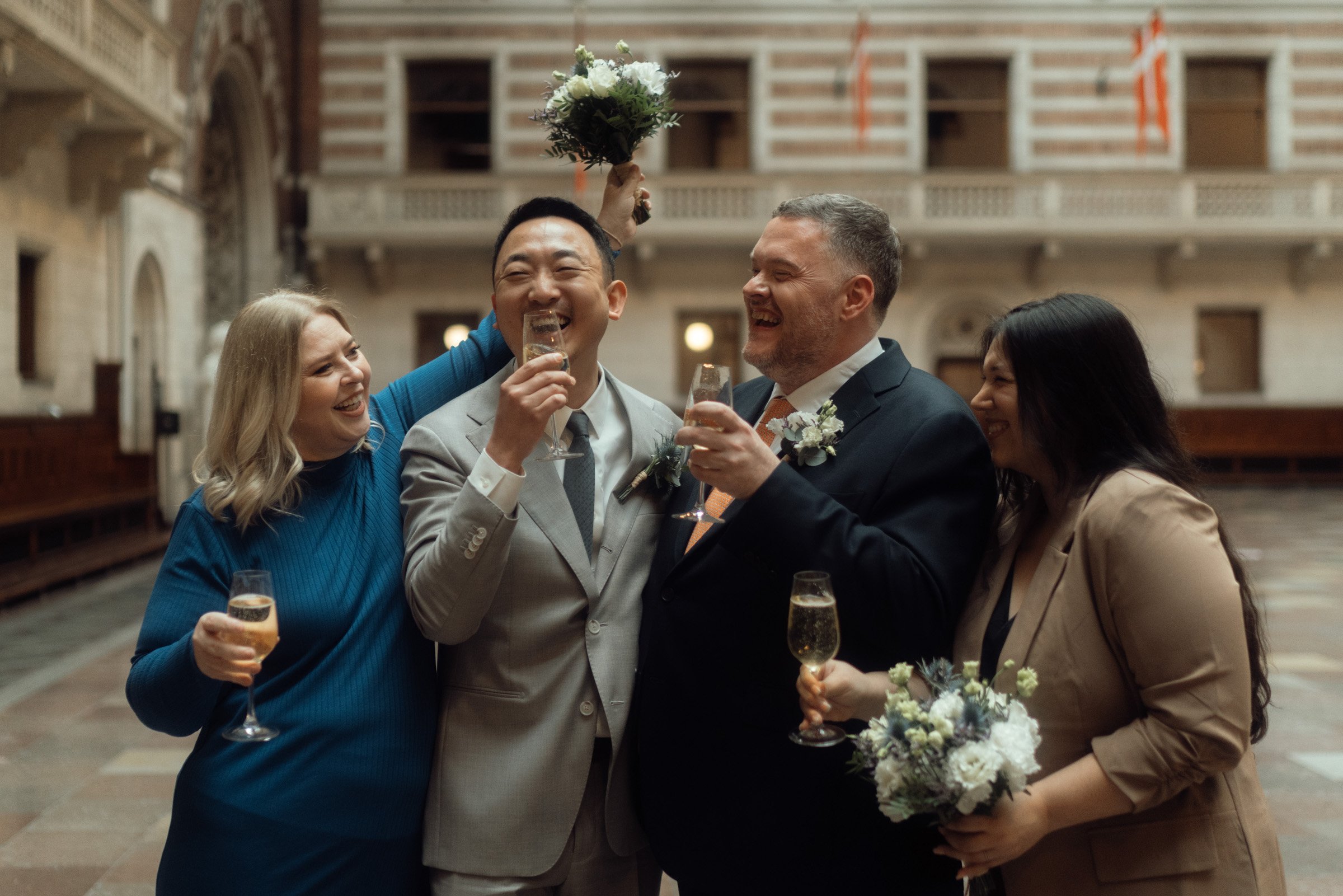9 gender neutral terms every wedding vendor should use
and how to use them like a proThe wedding industry loves tradition, sometimes so much it forgets that not all traditions were designed for everyone. And honestly, some of them weren’t designed for anyone except to keep the patriarchy comfy (like giving the bride away as if she was property?).
And beside traditions, one of the most powerful (and easiest) ways to make weddings more inclusive is to start with language. Words tell your clients if they belong, and if your words still assume bride + groom by default, you’re telling everyone else they’re a side note.
The words we use shape the society we want to live in.
As a Copenhagen wedding photographer working with international, LGBTQ+, and nontraditional couples every week, I see it all the time: vendors saying they’re inclusive but still handing over “Bridal Suite” keycards and “Maid of Honor” checklists like it’s 1953. It’s lazy, but it’s fixable.
Let’s see how.
1) Marrier / Partner
If two people are getting married, they’re marriers. Or partners. Revolutionary, I know.
Stop pretending every wedding needs a bride and a groom to function.
Use “Partner 1 / Partner 2” on forms and contracts: your couples will fill in their own names without the need for you to assign them gender roles they didn’t sign up for.
2) Spouse / Partner
The person who just got married doesn’t need to be automatically labeled a “husband” or “wife” unless THEY choose it. It’s a personal title, not a default.
Instead, words like “spouse” or “partner” work for everyone: they’re clear, respectful, and inclusive.
At the end of the day, they tell you the only thing that matters to you: this is the person they’ve chosen to share their life with.
3) Wedding Party
Why are we still calling it a bridal party when not everyone in it is a bride?
The group standing by their side on their wedding day isn’t defined by gender; they’re defined by their role in supporting the marriers.
“Wedding party” is accurate, simple, and leaves no one out.
4) Ceremony Attendants
You know what’s more awkward than misgendering someone? Misgendering them in the printed program that gets handed to every guest.
Terms like “bridesmaids” or “groomsmen” assume way too much and erase anyone who doesn’t fit neatly into those boxes.
“Ceremony attendants” respects everyone’s identity while describing exactly what they are: the people standing with the marries as they marry.
5) Honor Attendant
The terms “maid of honor” and “best man” are rooted in traditions that assume both gender and hierarchy - and, historically, even a sense of ownership over the person getting married.
“Honor attendant” focuses on the role itself: the person who stands closest to them, supports them, and helps carry the day.
It also leaves space for anyone to fill that position, regardless of their gender.
After all, we’ve had “best men” for centuries… so why not “best women”, “best friends”, or simply the “best person for the job”?
6) Flower Person / Ring Bearer (or Ring Guardian)
For some reason, flowers have long been tied to girls, as if tossing petals down an aisle requires ovaries.
That’s just another patriarchal assumption we don’t need.
The truth is simple: anyone can throw petals, anyone can carry rings. A five-year-old in sparkly boots? Perfect. Your grandfather? Even better.
Calling the role “flower person” or “ring guardian” takes away the gender policing and leaves only what matters: the joy of being part of the ceremony.
7) Processional Language: Accompany / Walk Together
The old “who gives this woman away?” belongs in the past.
Women are not property being transferred from one man to another. Even the softer version - fathers telling grooms to “take care of her” - still drips with ownership.
A better option? Try: “Who accompanies these marriers today?” Or skip the handoff completely and let them walk in together, because they’re not children, they’re adults choosing each other.
8) Parent(s) Dance
Call it a “Parent Dance.” That way no one has to play gender Twister to figure out who’s “allowed” to dance with whom.
9) Wedding Suite / Getting-Ready Rooms
Yet one more place where we give a gender to something that does not need a gender: a room.
I mean, if you’ve got a dress hanging in the room, everyone knows who’s wearing it. Do you really need to label the space “bridal suite” like the door will refuse to open unless it detects a woman? Just call it a “wedding suite” or, if there are two, “suite A” and “suite B”, or use their names. And move on.
The Bottom Line
Language shapes culture. And the culture of weddings has been built on assumptions that are so rooted that we stop noticing how absurd they are.
But your clients notice. Your words tell them if they belong, or if they’re an afterthought in a world built for someone else’s love story.
So change your language. Audit your forms, train your team, and stop gendering everything from chairs to champagne glasses. Because weddings are supposed to be about relationships - and relationships come in all shapes.
Want to go deeper?
I’ve written a book for photographers who want to do more than just “add a rainbow” to their brand. It’s about building a business that’s genuinely inclusive, expanding the frame beyond clichés, and treating every couple with respect from the first email to the final gallery.
If you’re ready to challenge an industry that still runs on outdated norms - and to attract clients who share your values - this book is for you.
AND! Part of the revenue goes to charity.






